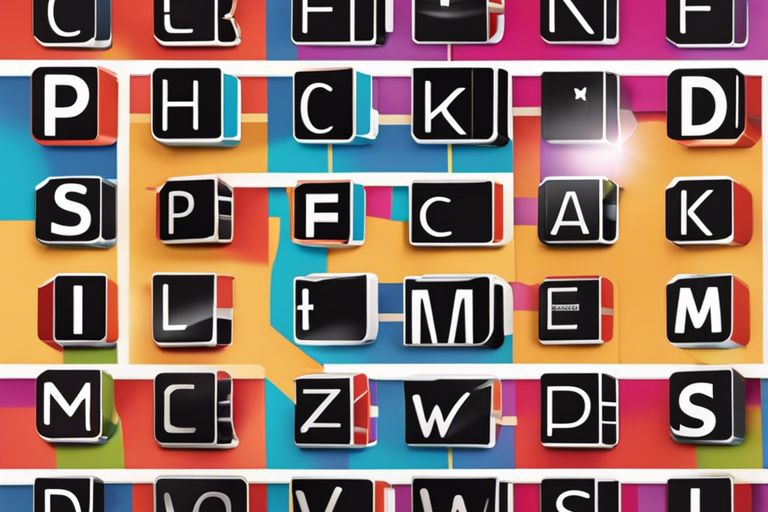Understanding the intricate link between phonics and spelling is crucial for anyone looking to master the written English language. Phonics, the method of teaching reading and writing through the sounds of letters, plays a fundamental role in how words are spelled. This connection is vital for building a strong foundation in literacy skills. In this blog post, we will research into the importance of phonics in spelling, explore how these two aspects complement each other, and provide valuable insights into how you can enhance your spelling abilities by mastering phonics. Stay tuned to discover the key principles that will empower you to become a proficient speller.
Key Takeaways:
- Phonics is fundamental: Understanding phonics is vital for developing strong spelling skills as it helps in recognising the sounds that make up words.
- Phonics improves decoding: Proficiency in phonics aids in decoding words, making it easier to spell them correctly.
- Spelling is linked to phonics: The ability to spell words correctly is closely connected to one’s grasp of phonics and sound-letter relationships.
- Consistent practice is key: Regular practice of phonics-based activities can enhance spelling abilities over time.
- Engage in multisensory learning: Using a variety of methods to learn phonics and spelling, such as visual, auditory, and kinesthetic approaches, can further solidify the connection between the two.
The Phonics Approach
Understanding Phonics
Phonics is a method of teaching reading and spelling that focuses on the relationship between sounds and letters. By understanding how letters represent sounds, children are able to decode words and improve their spelling. Phonics instruction typically begins with teaching the alphabet and letter sounds before progressing to more complex phonetic rules.
Phonics Instruction Methods
There are several methods of teaching phonics, including synthetic phonics, analytic phonics, and embedded phonics. Synthetic phonics involves teaching children to convert letters into sounds and blend them together to form words. Analytic phonics looks at whole words and helps children identify common patterns within them. Embedded phonics integrates phonics instruction within meaningful context, such as through reading and writing activities.
It is important for educators to consider the needs and learning styles of their students when choosing a phonics instruction method. By using a variety of approaches and providing ample practice opportunities, teachers can effectively help children develop strong phonics skills that will ultimately improve their reading and spelling abilities.
The Integration of Spelling in Phonics
Phonemic Awareness and Spelling Patterns
When considering phonics education, understanding phonemic awareness is crucial for mastering spelling patterns. Phonemic awareness involves the ability to identify and manipulate individual sounds (phonemes) in spoken words. This skill is directly linked to spelling, as recognising the sounds in words helps learners spell them correctly. By developing phonemic awareness, students can grasp the relationship between sounds and letters, paving the way for improved spelling proficiency.
Teaching Strategies for Spelling within Phonics Education
Effective teaching strategies play a vital role in integrating spelling within phonics education. Utilising multisensory approaches, such as using letter tiles, word sorts, and interactive games, can enhance students’ understanding of spelling rules and patterns. Providing regular practice opportunities and personalised feedback also contributes to reinforcing spelling skills within the phonics framework. By incorporating engaging activities and tailored guidance, educators can support learners in applying phonics principles to enhance their spelling abilities.
Challenges and Considerations
Common Difficulties in Phonics and Spelling
Many learners struggle with phonics and spelling due to the complex nature of the English language. Common difficulties include understanding the relationship between letters and sounds, recognising common spelling patterns, and applying phonics rules consistently. These challenges can impact a student’s ability to read and write effectively, leading to frustration and a lack of confidence in their literacy skills.
Tailoring Instruction to Individual Needs
It is crucial for educators to tailor phonics and spelling instruction to meet the individual needs of each learner. By assessing a student’s strengths and weaknesses, teachers can create personalised learning plans that address specific areas of difficulty. This targeted approach allows for differentiated instruction and provides support where it is most needed, ultimately helping students to progress and succeed in their literacy development.
Advancements and Tools in Teaching Phonics and Spelling
Technology-Enhanced Learning
Technology has revolutionised the way we teach phonics and spelling, offering interactive tools and resources to engage learners. From educational apps and online games to interactive whiteboards, technology enhances the learning experience by making it more dynamic and immersive. With the use of digital tools, educators can cater to different learning styles and provide personalised learning experiences for students.
Resources and Materials for Effective Learning
Effective teaching of phonics and spelling relies heavily on access to quality resources and materials. From phonics workbooks and flashcards to multisensory activities and word-building games, having a diverse range of materials at hand can make learning engaging and productive. Additionally, incorporating real-life examples and engaging stories can further reinforce learning and make it more relatable for students.
The Connection Between Phonics and Spelling – What You Need to Know
Understanding the connection between phonics and spelling is crucial for developing strong literacy skills. Phonics provides the foundational knowledge of how sounds correspond to letters, which directly impacts spelling accuracy. By mastering phonics, individuals can improve their spelling abilities and become more proficient readers and writers. Practising phonics-based spelling activities and continuously reinforcing these skills can significantly enhance overall literacy performance. Therefore, a solid grasp of phonics is important for mastering spelling and ultimately boosting literacy skills.
FAQ
Q: What is the connection between phonics and spelling?
A: The connection between phonics and spelling lies in the understanding of how sounds relate to letters. Phonics helps individuals decode words by recognising the sounds that each letter or group of letters represents, which in turn aids in spelling words correctly.
Q: Why is phonics important for spelling?
A: Phonics is important for spelling as it provides the foundational knowledge required to link sounds to letters. By learning phonics, individuals can develop the skills needed to sound out words and understand the spelling patterns that follow, ultimately improving their spelling abilities.
Q: How does phonics instruction improve spelling proficiency?
A: Phonics instruction enhances spelling proficiency by teaching individuals the relationship between sounds and letters. By learning phonics rules and patterns, individuals can apply this knowledge to accurately spell words based on their sound components, resulting in improved spelling accuracy.
Q: What are some effective strategies for teaching phonics and spelling?
A: Effective strategies for teaching phonics and spelling include providing explicit instruction on letter-sound relationships, engaging in multisensory activities that reinforce phonics concepts, offering opportunities for practice through word games and activities, and incorporating regular assessments to monitor progress and identify areas for improvement.
Q: How can parents support their child’s phonics and spelling development at home?
A: Parents can support their child’s phonics and spelling development at home by reading regularly with their child to reinforce phonics skills, engaging in spelling practice through fun activities and games, providing a variety of reading materials to encourage exposure to different words, and celebrating progress and effort to boost their child’s confidence in phonics and spelling.












